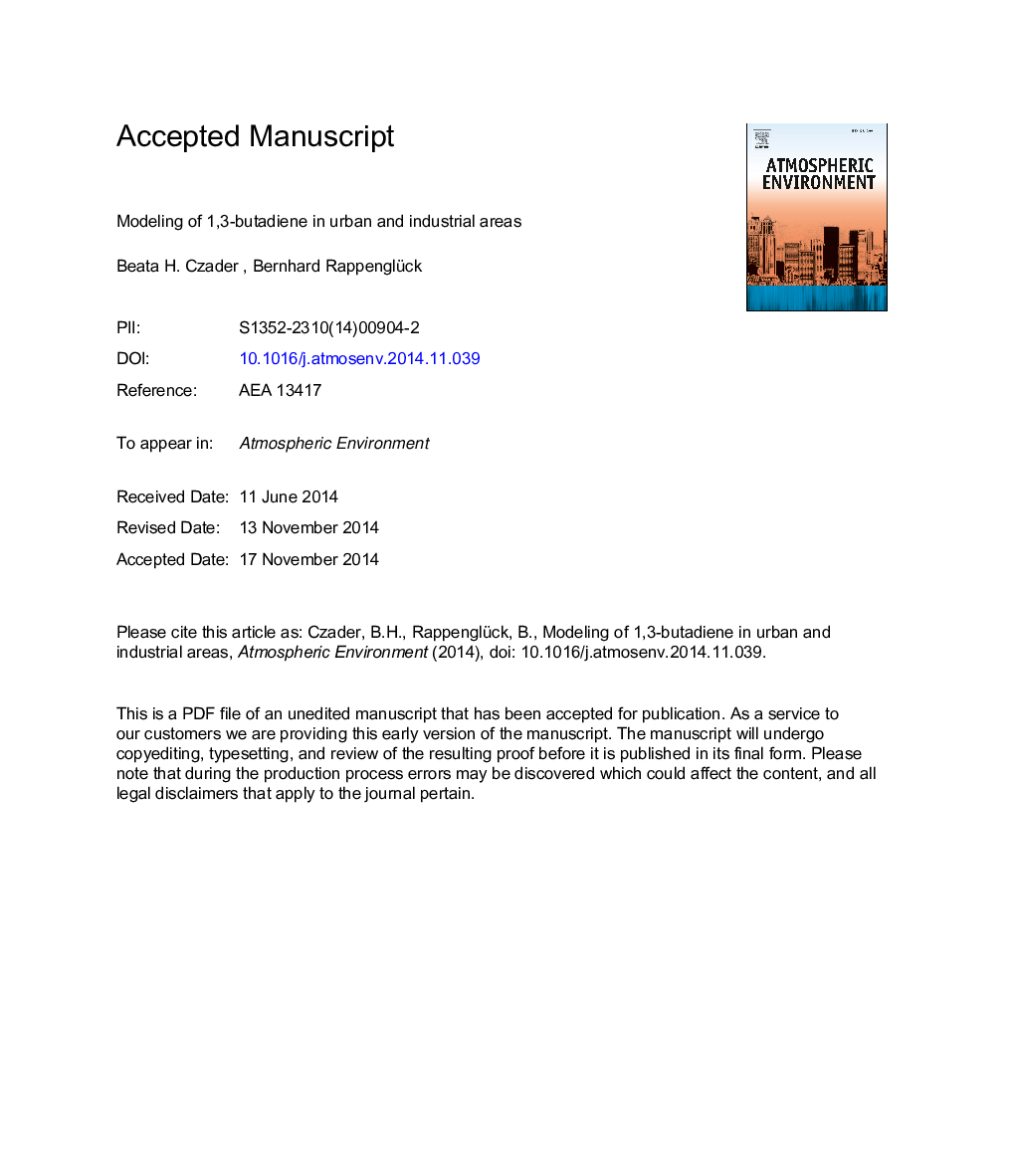| Article ID | Journal | Published Year | Pages | File Type |
|---|---|---|---|---|
| 6338813 | Atmospheric Environment | 2015 | 33 Pages |
Abstract
1,3-butadiene is an important pollutant in terms of public health and important driver for photochemical processes influencing ozone formation in the area of Houston. Ambient levels of 1,3-butadiene were simulated with the Community Multiscale Air Quality model (CMAQ) including the SAPRC99-extended mechanism and the results were compared to spatially and temporally resolved observations of 1,3-butadiene for an episodic period during Summer 2006. Relative contributions of different type of emissions and chemical reactions to 1,3-butadiene concentrations were examined, the highest contribution was found to be from industrial emission sources. 1,3-butadiene mixing ratios in the urban area were found to be lower than in the industrial area. Although emissions of 1,3-butadiene peak during daytime its mixing ratios are lower during daytimes as compared to nighttime. 1,3-butadiene is removed from the surface through vertical upward transport (â¼90%) and chemical reactions (â¼10%). During daytime 1,3-butadiene reacts mainly with the OH radical (90%), during nighttime this reaction pathway is still significant in the industrial area (57% of all reaction pathways). Reaction with NO3 during nighttime contributes 33% in industrial and 56% in urban areas, where high NOx emissions occur. Reaction with ozone contributes 10% and 13% in industrial and urban areas, respectively. Analysis of measured data revealed that episodically very high emissions spikes of 1,3-butadiene occur. CMAQ often underpredicts 1,3-butadiene mixing ratios when sites are exposed to sporadic releases from industrial facilities. These releases are not accounted for in the emission inventory. It also appears that emissions of 1,3-butadiene from point sources have much more variability than those listed in the emission inventory.
Related Topics
Physical Sciences and Engineering
Earth and Planetary Sciences
Atmospheric Science
Authors
Beata H. Czader, Bernhard Rappenglück,
